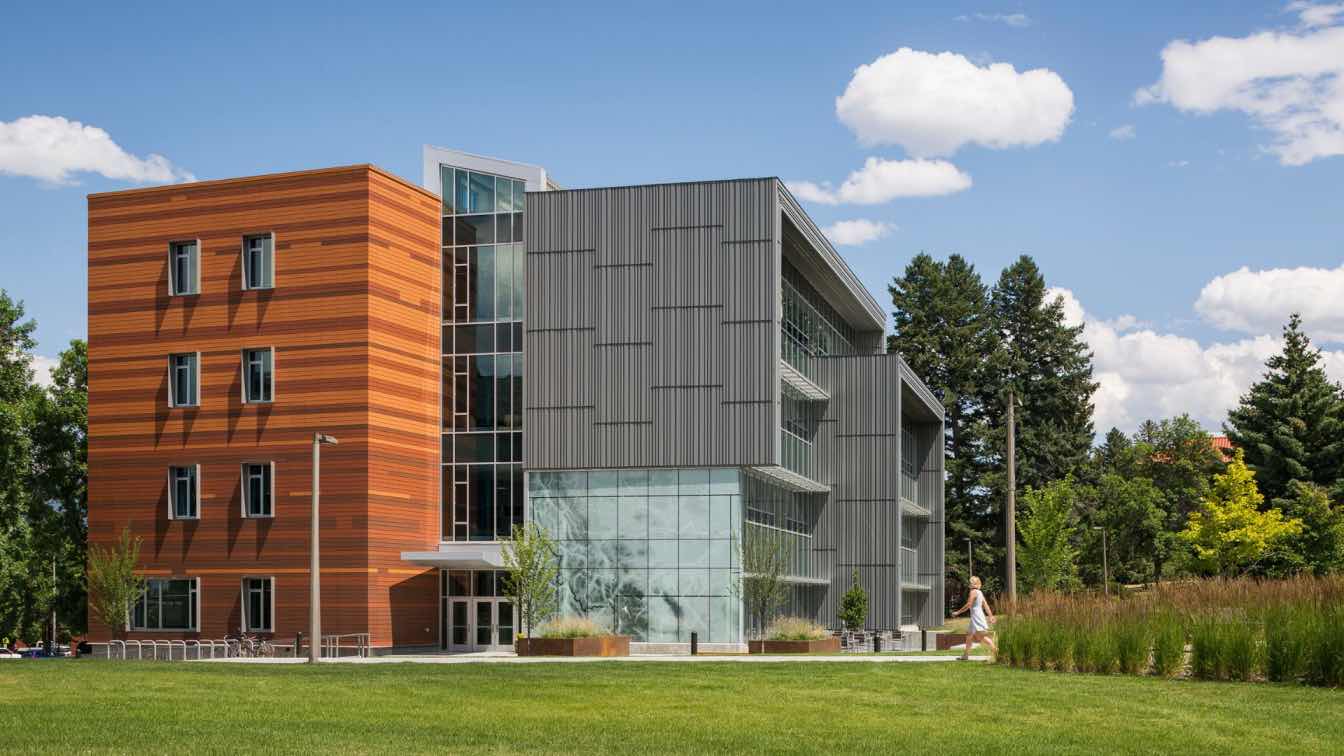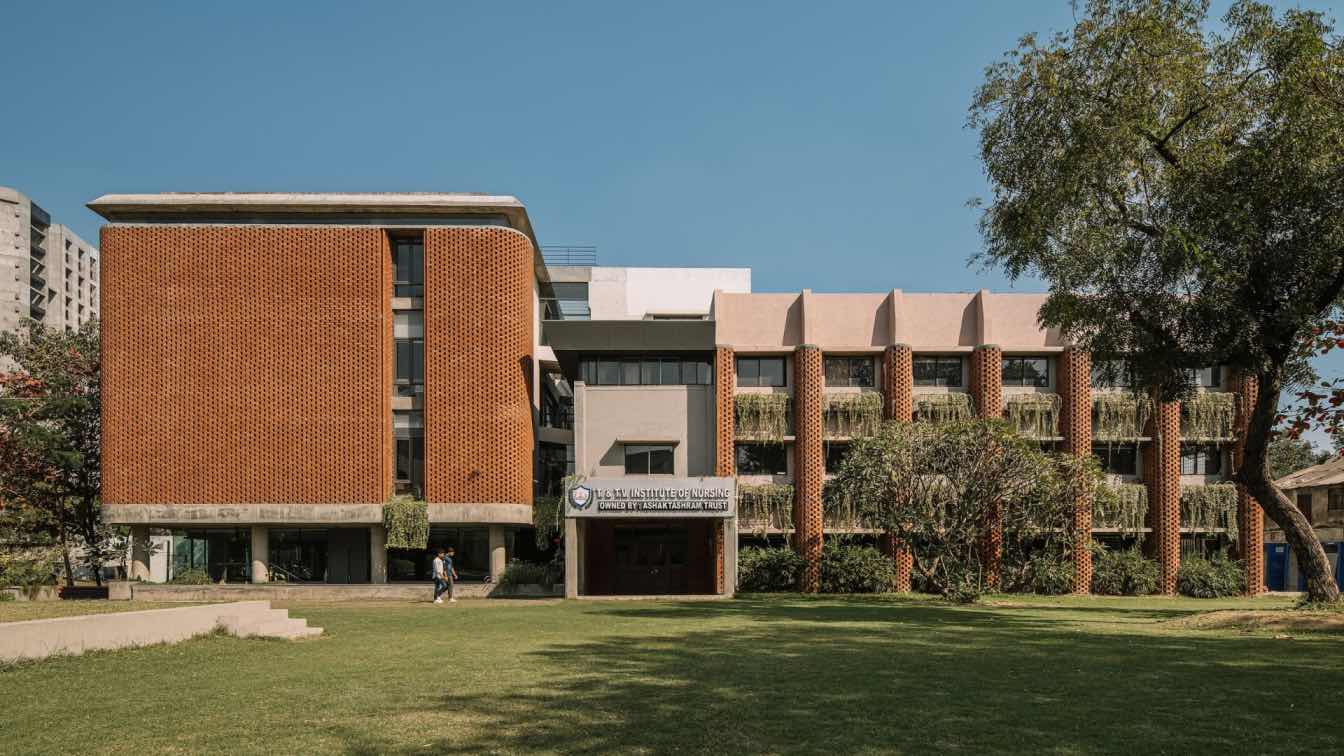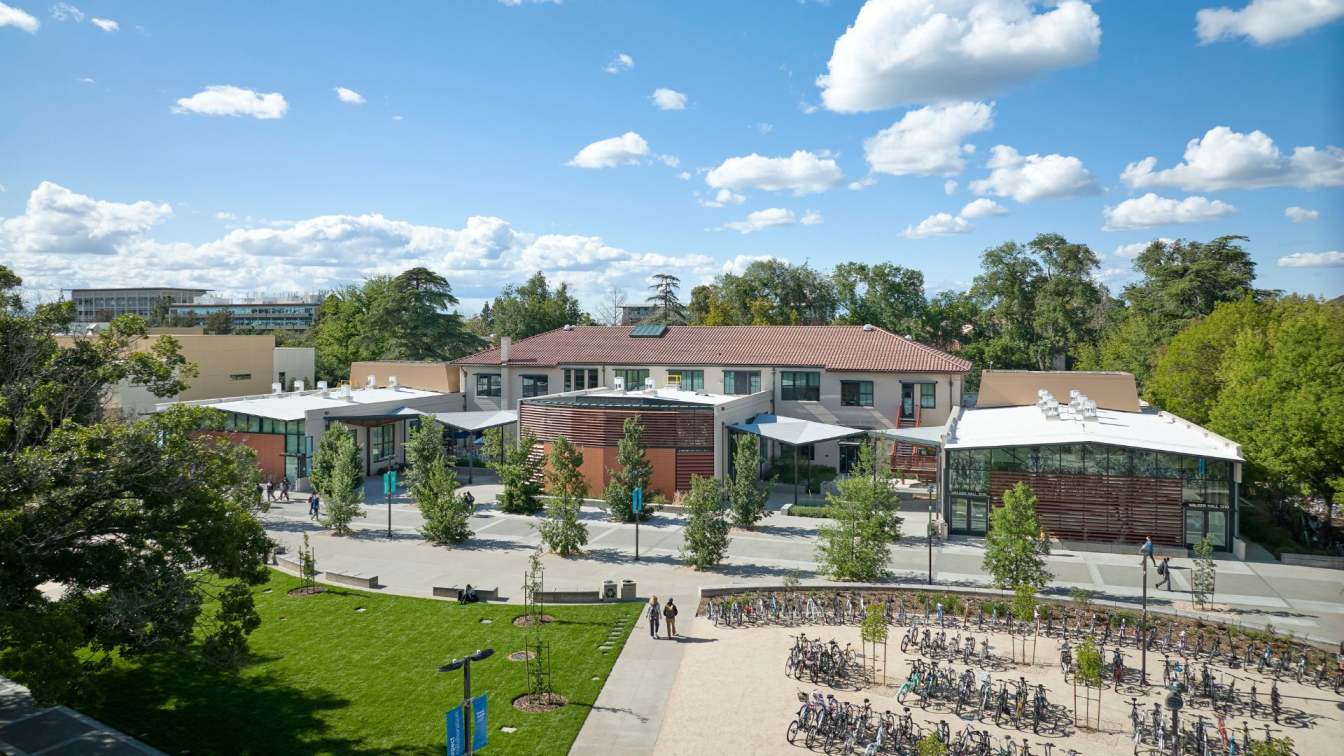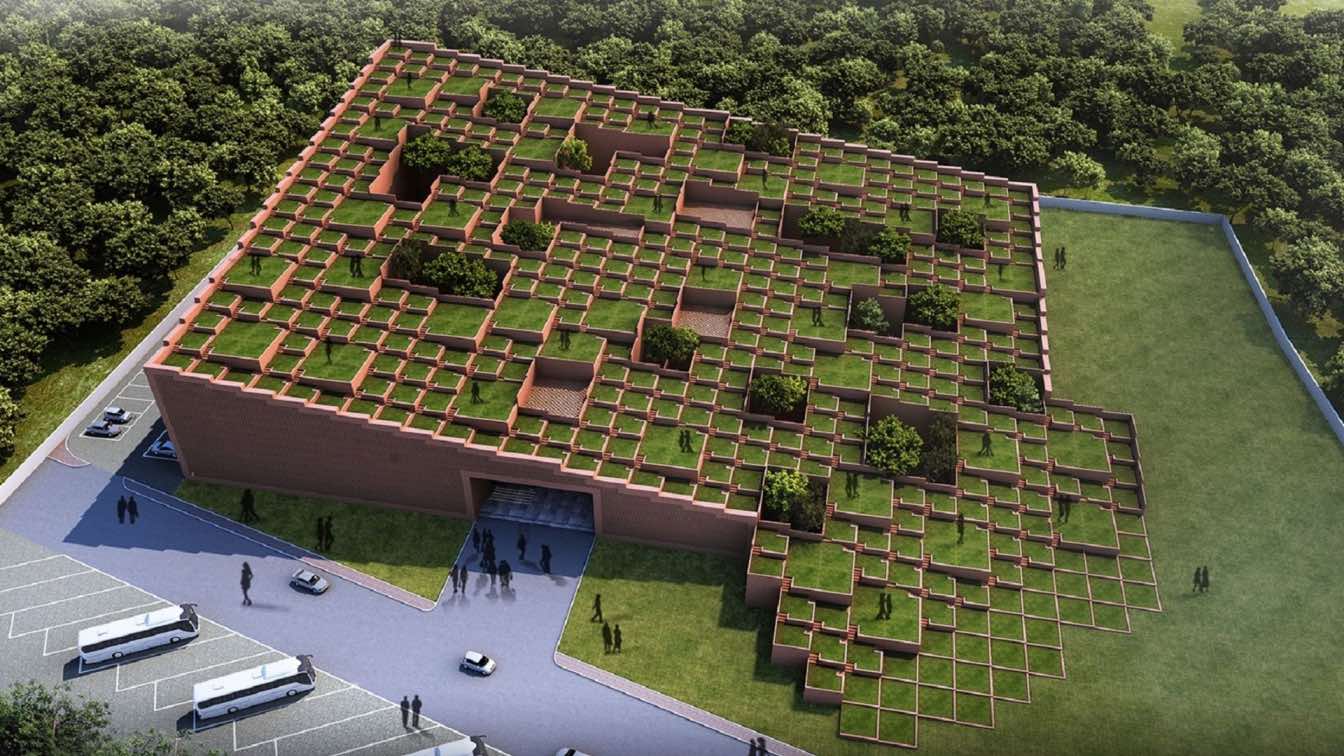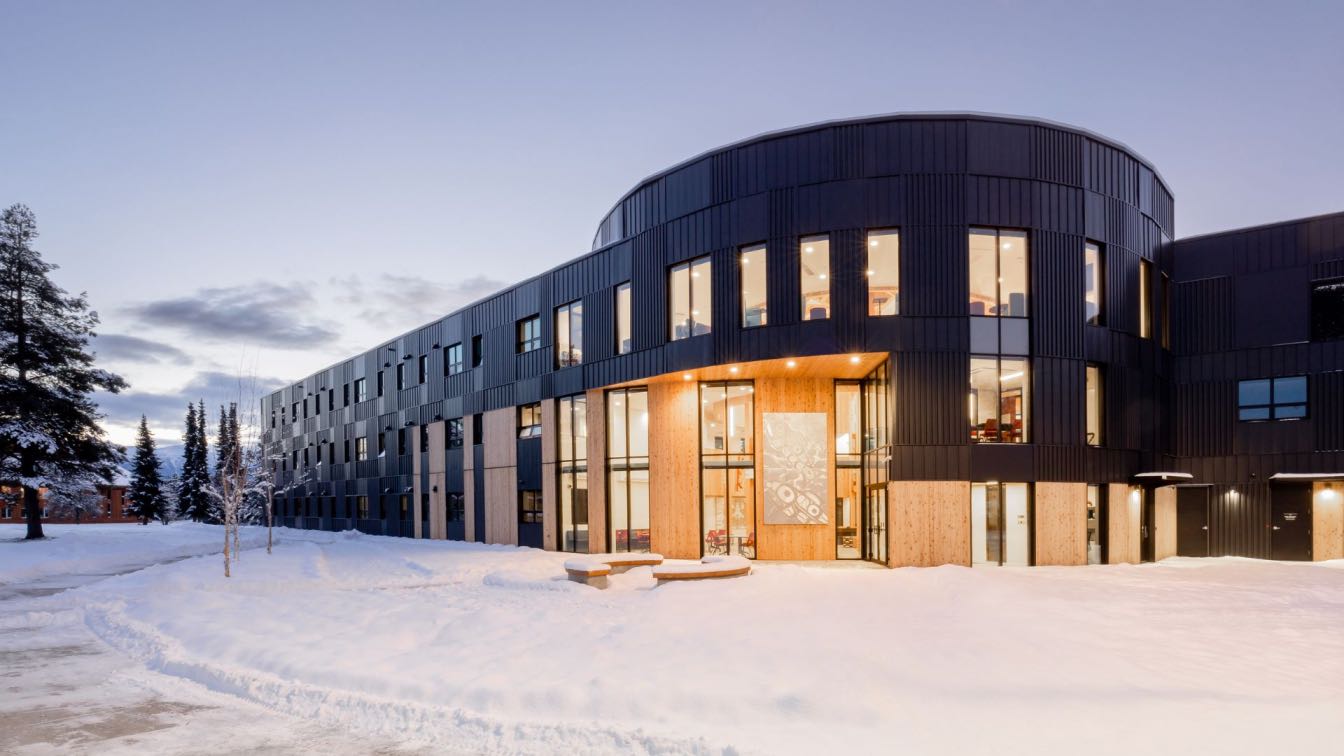Hennebery Eddy Architects designed the Jake Jabs College of Business & Entrepreneurship at Montana State University to be an interdisciplinary, collaborative facility, weaving built and natural environments. The academic building provides state-of-the-art teaching facilities, formal and informal meeting areas, interactive learning centers, and social gathering spaces for MSU business students, as well as increased collaboration between the college and other academic disciplines.
The Big Sky Country inspired Jabs Hall. The building incorporates views to the Bridger Mountains and connects to the campus with glass walls that open to a south-facing outdoor plaza. Organized around a central forum that connects all four building floors, the central, open space provides power access, fireplace hearths, and ample glass writing surfaces. The hall’s north facade is clad with terra cotta panels that are referential to the masonry of historic Montana Hall and able to withstand the region’s freeze/thaw cycles. The stratified pattern of the terra cotta — offset by dark, vertical zinc panels — evokes the local geology.
The building is LEED Gold certified and showcases leadership in sustainable design with passive design features including organization of the building and openings to minimize heat gain and heat loss, a ground source heat organization pump, a transpired solar collector that pre-heats air on cold but sunny winter days, thermal mass, and connection to nearby district heating and cooling loops.





































